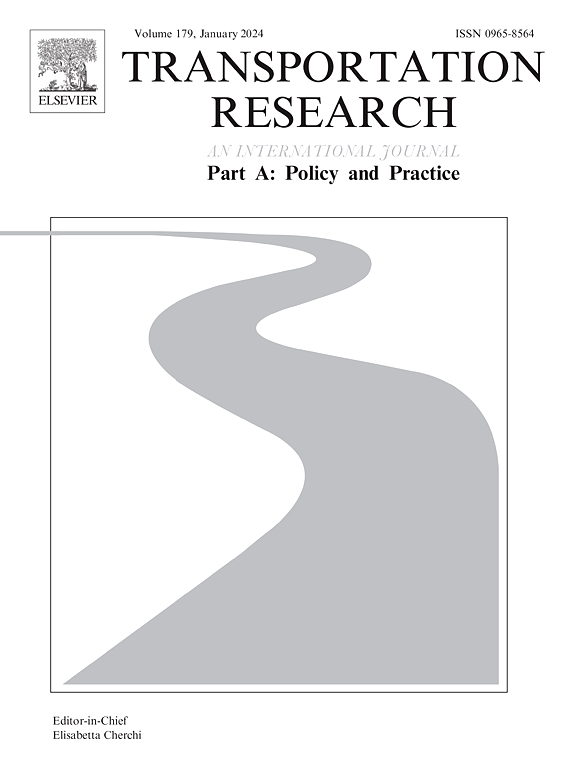Exploring the influence of Internet-related perceptions and e-shopping on spatiotemporal accessibility perceptions: A study of social housing beneficiaries in Luxembourg
IF 6.3
1区 工程技术
Q1 ECONOMICS
Transportation Research Part A-Policy and Practice
Pub Date : 2025-03-31
DOI:10.1016/j.tra.2025.104457
引用次数: 0
Abstract
Perceived accessibility approaches complement objective accessibility indicators, which are beneficial for identifying accessibility-related inequalities. Current perceived accessibility studies lack in considering the space and time dimensions of accessibility, the potential impact of Internet-related perceptions, and vulnerable population groups as the center focus. This paper addresses these gaps by answering the research question: How do Internet perceptions and e-shopping frequency correlate with the perceived potential of people at housing insecurity to overcome space–time accessibility barriers with the help of the Internet? A questionnaire is first disseminated among the beneficiaries of a housing foundation in a vulnerable situation. The questionnaire asked for (i) the perceived potential to overcome space and time accessibility barriers with the help of the Internet; (ii) internet-related perceptions; (iii) actual travel behavior, and (iv) participants’ socio-economic characteristics. The data collected serves as the basis for conducting two ordinal regressions. The results show positive associations between participants’ perceived potential to overcome space and time accessibility barriers thanks to internet and their internet-related perceptions. In particular, for housing beneficiaries travelling longer distances, positive perceptions towards internet might result in a positive perceived potential to overcome both space and time accessibility barriers. From the socio-economic side, young participants are more likely to perceive that they can overcome space and time barriers thanks to the Internet, while highly-educated people only spatial barriers. The paper closes with some concluding remarks and suggests potential policy interventions.
求助全文
约1分钟内获得全文
求助全文
来源期刊
CiteScore
13.20
自引率
7.80%
发文量
257
审稿时长
9.8 months
期刊介绍:
Transportation Research: Part A contains papers of general interest in all passenger and freight transportation modes: policy analysis, formulation and evaluation; planning; interaction with the political, socioeconomic and physical environment; design, management and evaluation of transportation systems. Topics are approached from any discipline or perspective: economics, engineering, sociology, psychology, etc. Case studies, survey and expository papers are included, as are articles which contribute to unification of the field, or to an understanding of the comparative aspects of different systems. Papers which assess the scope for technological innovation within a social or political framework are also published. The journal is international, and places equal emphasis on the problems of industrialized and non-industrialized regions.
Part A''s aims and scope are complementary to Transportation Research Part B: Methodological, Part C: Emerging Technologies and Part D: Transport and Environment. Part E: Logistics and Transportation Review. Part F: Traffic Psychology and Behaviour. The complete set forms the most cohesive and comprehensive reference of current research in transportation science.

 求助内容:
求助内容: 应助结果提醒方式:
应助结果提醒方式:


